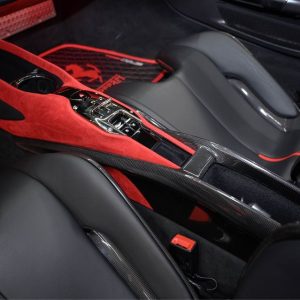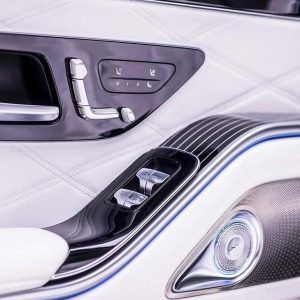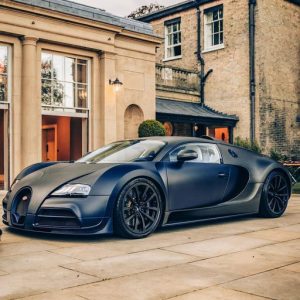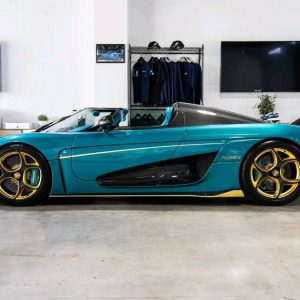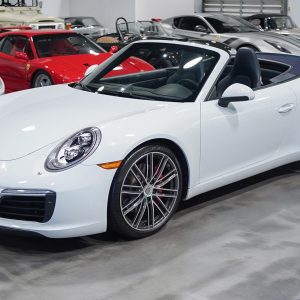|
Car producer : |
Rolls Royce |
|---|---|
|
Model: |
Silver Dawn Drophead Coupe by Park Ward |
|
Year: |
1949-1955 |
|
Type: |
Cabriolet |
The Rolls-Royce Silver Dawn is a car that was produced by Rolls-Royce at their Crewe works between 1949 and 1955. It was the first Rolls-Royce car to be offered with a factory built body which it shared, along with its chassis, with the Bentley Mark VI until 1952 and then the Bentley R Type until production finished in 1955. The car was first introduced as an export only model. The left hand drive models had a column gear change, while right hand drives had a floor change by the door. Only with the R Type based model was it officially available on the home market, from October 1953.
A mere 760 were produced between 1949 and 1955. Earlier models up to circa May 1954 had a different fascia (dashboard) from the Bentley Mk.VI and ‘R’ Type, and were fitted with a single exhaust system. Later models from the SRH chassis series had the Bentley style fascia and the twin exhaust system, as fitted to the Bentley ‘R’ Type. On the Standard Steel cars throughout the production history, all the body panels forward of the bulkhead/firewall were slightly different from those fitted to the Bentley.
The in-line six cylinder, engine had overhead inlet and side exhaust valves and had a capacity of 4,257 cc until 1951 when it was enlarged to 4,566 cc. The carburettor was a single downdraught Stromberg until 1952 when it was replaced by a Zenith.
A four speed manual gearbox was fitted to all cars at first, with a 4-speed automatic becoming an option in late 1952 on the ‘E’ Series chassis, and on the corresponding Bentley ‘R’ Type chassis.
Cars with body style 322 featured the “dipped” fenders, which were a signature of early post-war Park Ward designs. These fenders curved to envelope the front fenders, faded down into the sides of the body, and then expanded again to cover the rear wheels with a “spat.” The well-proportioned design, with its neatly folding convertible top, could accommodate four adults, yet it also had the sporty pretensions of an open roadster. Only a dozen Silver Dawns were built to this style, of which only six were delivered to the United States.
The suspension was independent at the front using coil springs while at the rear the live axle used half elliptic leaf springs. The car had a separate chassis made with traditional riveted construction until 1953 after which it was welded. Servo assisted 12.25 in (311 mm) drum brakes were used, hydraulically operated at the front but retaining mechanical operation at the rear. Although many cars were fitted with factory built bodies, others were supplied to external coachbuilders.
Chassis’s were available to purchase for discerning clients and these were shipped to various approved coachbuilders who manufactured cars to order. The volume of the chassis’s being ordered became noticible and the company decided that they should offer a limited range of designs through their own or associated coachbuilders. Sidgreaves had introduced in the mid thirties a sporting range on the Rolls-Royce PII chassis and wanted to re-introduce the Rolls-Royce Continental on the rationalised platform and instructed the design team to come up with some ideas.
Pininfarina had manufactured coachbuilt bodies on the PII and the MK VI platforms and had an important client called Signor Luigi Bressani from Milan.







